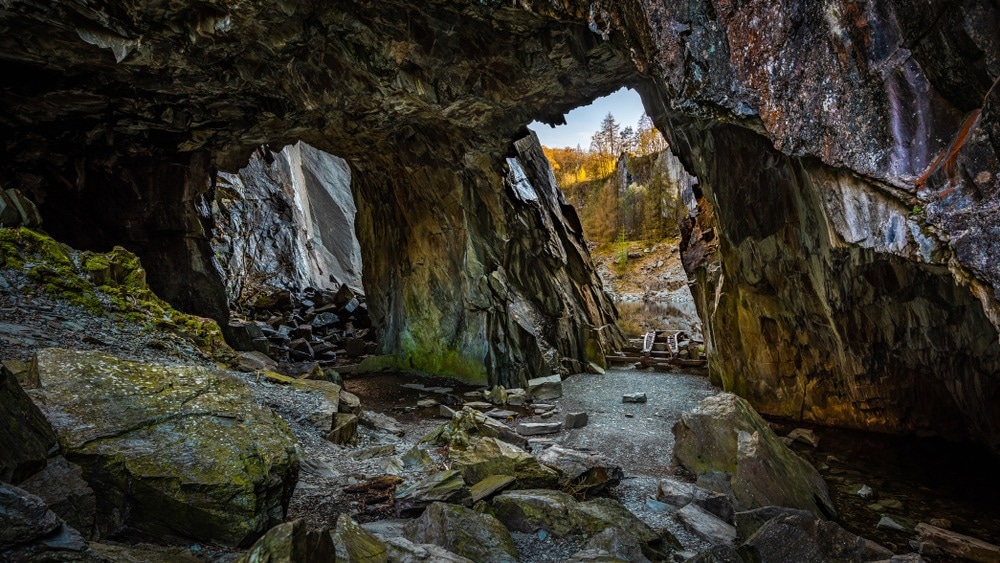Scientists from China have collaborated on a new paper to identify better gas outburst detection methods to significantly improve safety in mining. The authors have presented a novel deep-learning-based system for early warning and prediction of mining disasters.

Image Credit: mountaintreks/Shutterstock.com
Outbursts in Mining
Safety is a primary concern for mine operators and companies. Mining disasters have historically claimed the lives of many mine workers, and while safety has substantially improved in the past few decades, disasters still occur and cost the global industry millions of dollars each year.
Gas outbursts are a particular problem in mineral extraction such as coal mining. Much research has been carried out to help develop strategies to reduce the instance of these disasters over the past decades, with no major gas-related accidents being reported in 2020. However, gas outburst-related disasters have recently increased in China.
Researchers have paid particular attention in recent years to gas accident characteristics to create more effective prediction methods. Multiple studies have tackled issues with different approaches, including numerical modeling and algorithms.
It is difficult to accurately predict outbursts due to several real-world factors, including errors and delays in prediction results. To improve models and enhance onsite decision-making, influencing factors must be obtained in real-time. Designing reliable and accurate systems which can predict disasters is crucial for mine operators.
Characteristics and Indicators of Mining Outbursts
Outbursts are complex, dynamic processes that are caused by gas and pressure. They can also be triggered by mechanical and physical coal seam properties.
Outbursts proceed in four stages:
- Where they evolve
- Form
- Develop
- Terminate
Gas emission quantities undergo dynamic changes during an outburst. Several indicators can be used to analyze gas emission characteristics and predict the probability of disasters before they occur. Accurate analysis improves the reliability of systems.
Using Neural Networks to Assess Gas and Coal Outburts in Mines
Artificial intelligence is increasingly being utilized in the mining industry to perform tasks that would otherwise be laborious and unreliable when using human operators. Employing neural networks to analyze gas and coal outbursts improves real-time detection and prediction. This, in turn, significantly improves safety for mine workers. Neural networks can help circumvent issues with real-time delays in parameter capture.
Gas Outburst Study Using Deep Learning and Neural Networks
The authors have considered gas emission as a main factor due to its easily attainable real-time data. Moreover, gas emission characterizes the entire process of gas outbursts. The research has proposed a deep learning and neural network-based approach to providing accurate early warning capabilities for mining operations to improve worker safety and mitigate equipment and economic losses for mine companies.
A total of six indicators were used in the research to detect gas outbursts. The methods employed provide accurate information on the dynamic gas outburst process and can characterize variations.
Two indicators, MAPE and RMSE, demonstrated the neural network and machine learning method’s accuracy. By calculating the combined differences between each of the six indicators, the proposed evaluation model was developed. The novel was based on a Recurrent Neural Network.
The system was applied to a previous outburst disaster that occurred in China in 2021. The early warning indicators were thoroughly evaluated in the paper. Using historical data, the model detected abnormal gas emission changes four days before the disaster happened. Further gas emission data from other mines was used to verify the accuracy of the proposed early warning system.
Frequent orange warnings were initiated by the model, demonstrating the sensitivity of the early warning system to gas outbursts. Continuous red warnings were also initiated over the period of a few days before the simulated disaster occurred.
Abnormal changes were successfully detected and captured by the model. Furthermore, the model confirmed that gas emission quantities undergo abnormal changes right before an accident occurs, which agrees with established occurrence laws.
Improving the Early Warning of Gas Outbursts
The novel early warning system developed in the research has the potential to significantly improve mine safety by accurately and reliably predicting gas outburst accidents before they claim the lives of workers and destroy equipment. In coal mining, gas outbursts are a critical occurrence that can lead to reduced productivity and profitability for mines.
The deep learning and neural network-based model has been verified on real-world historical gas outburst accident data, attesting to its powerful ability to prevent disasters in the future. Along with other disruptive technologies such as automation and data connectivity in mines, this system will help to significantly improve the safety, productivity, and economic viability of coal mines in the future.
References and Further Reading
Wang, C et al. (2022) Early Warning Method for Coal and Gas Outburst Prediction Based on Indexes of Deep Learning Model and Statistical Model. Frontiers in Earth Science. https://doi.org/10.3389/feart.2022.811978
Disclaimer: The views expressed here are those of the author expressed in their private capacity and do not necessarily represent the views of AZoM.com Limited T/A AZoNetwork the owner and operator of this website. This disclaimer forms part of the Terms and conditions of use of this website.